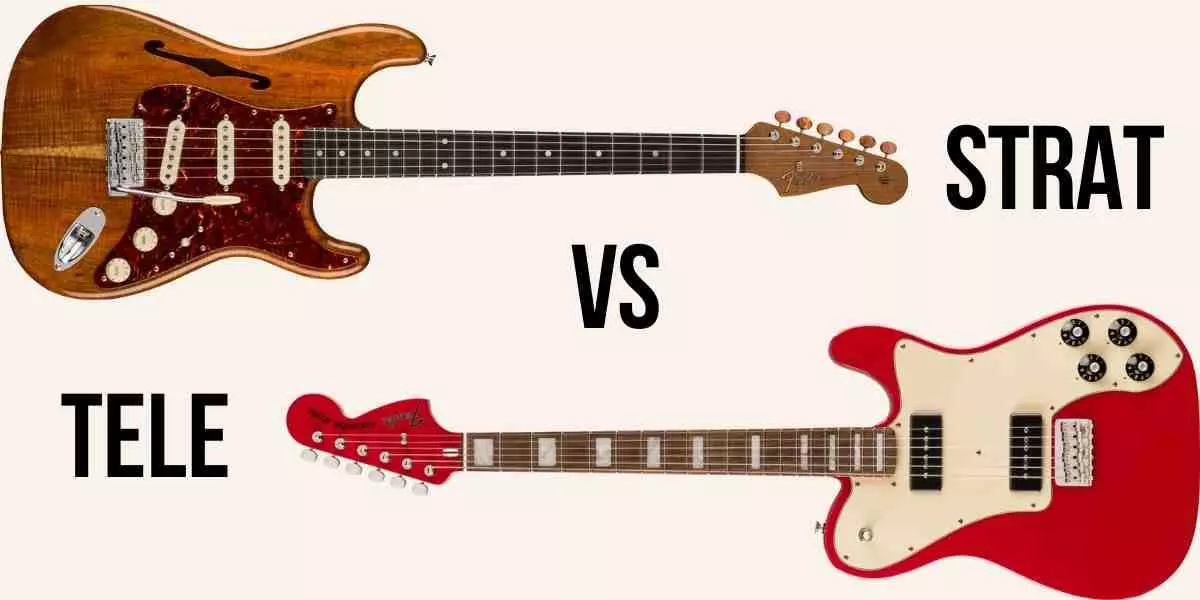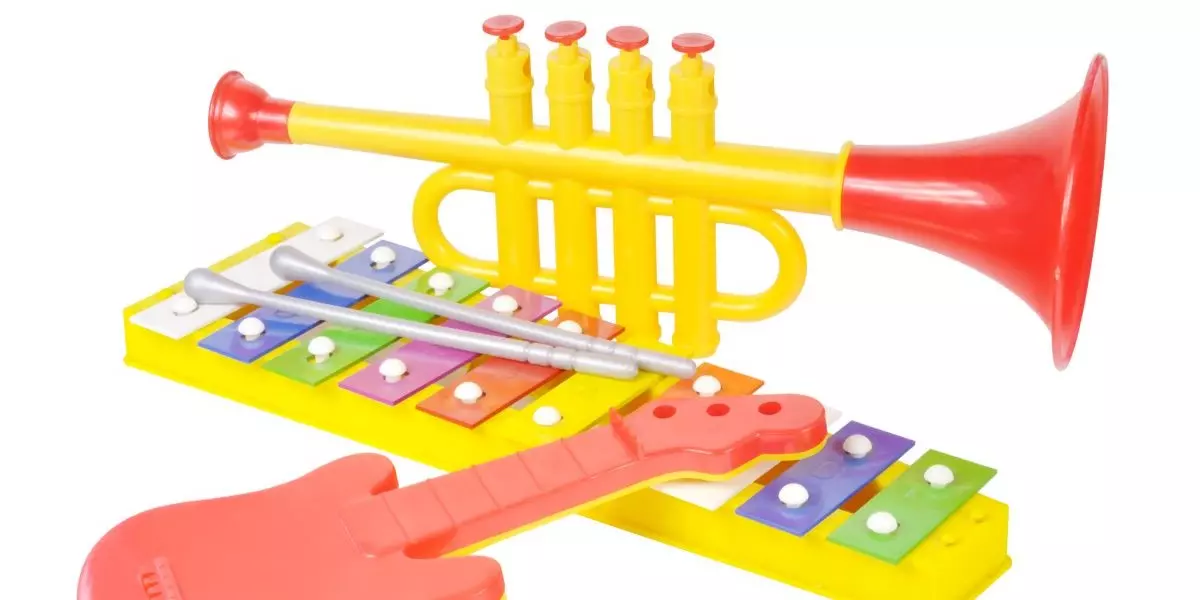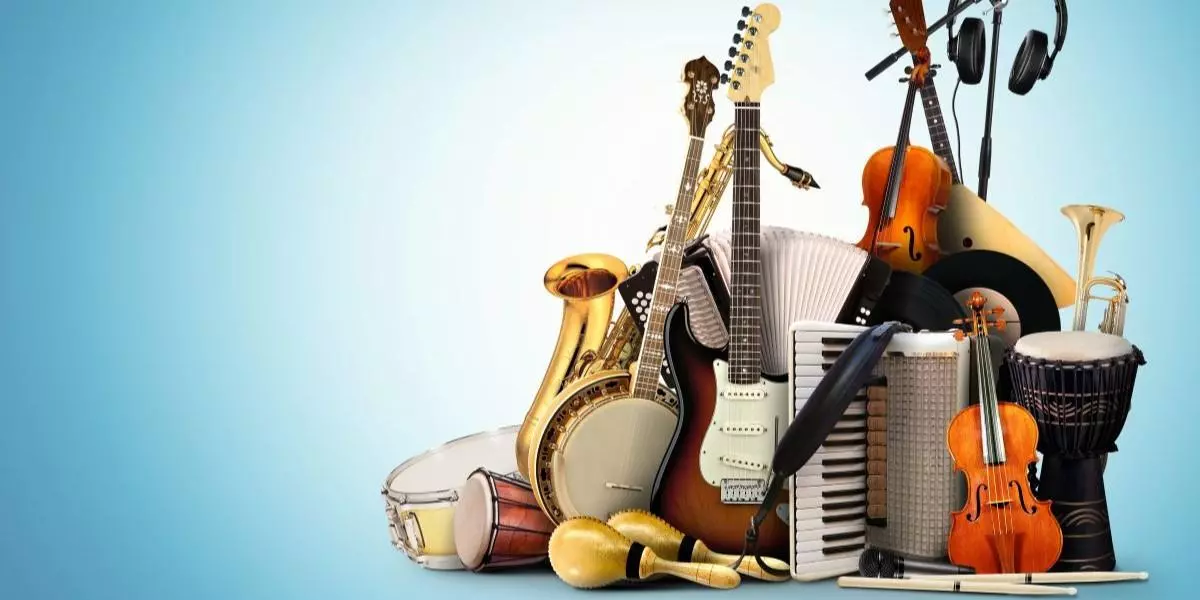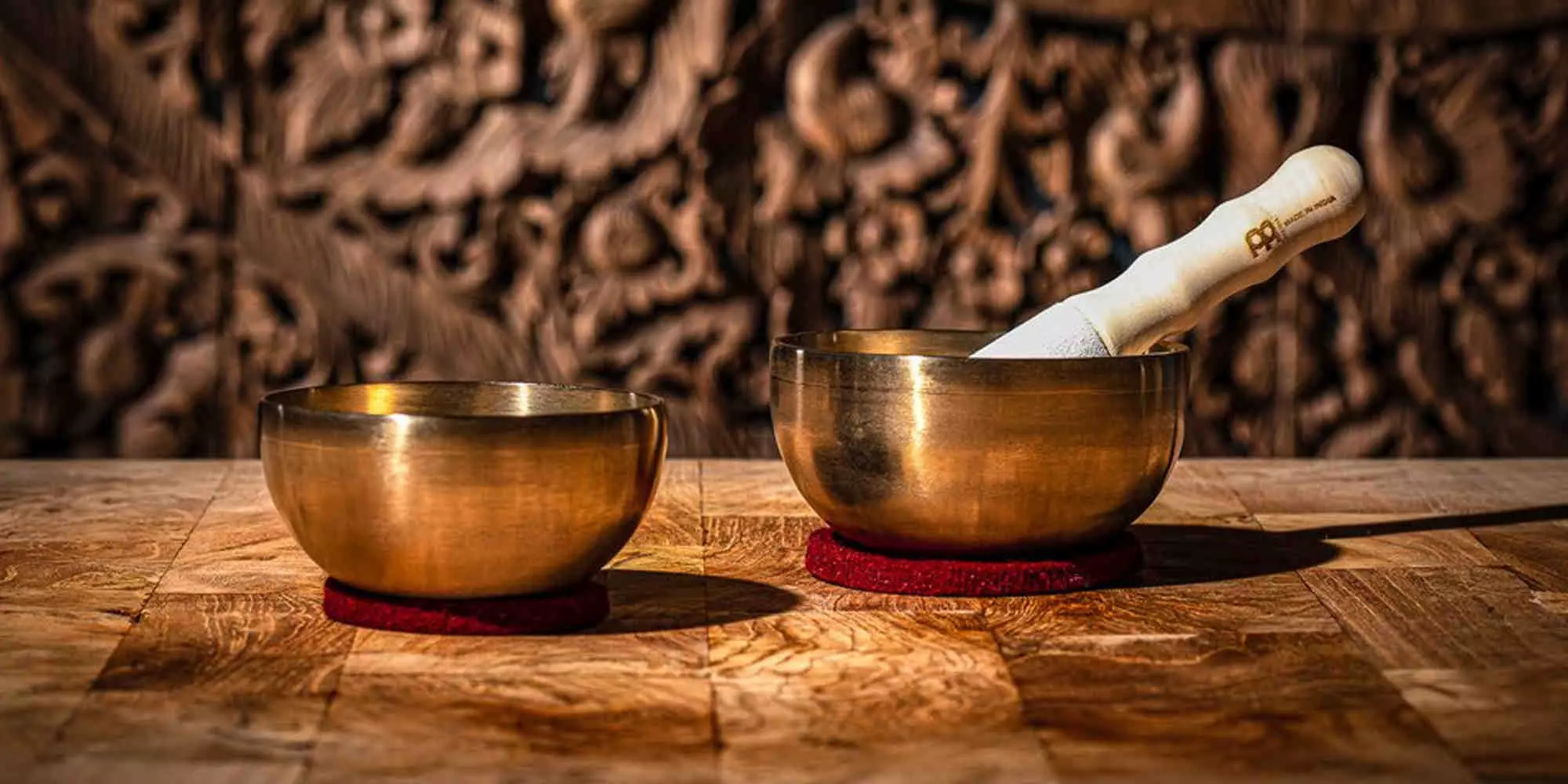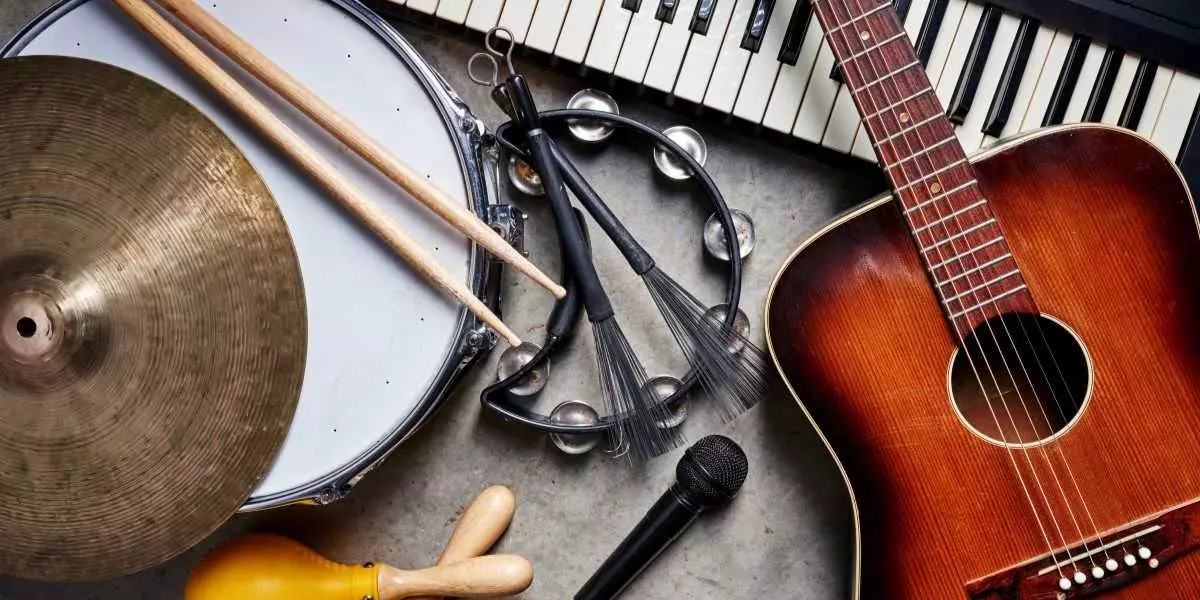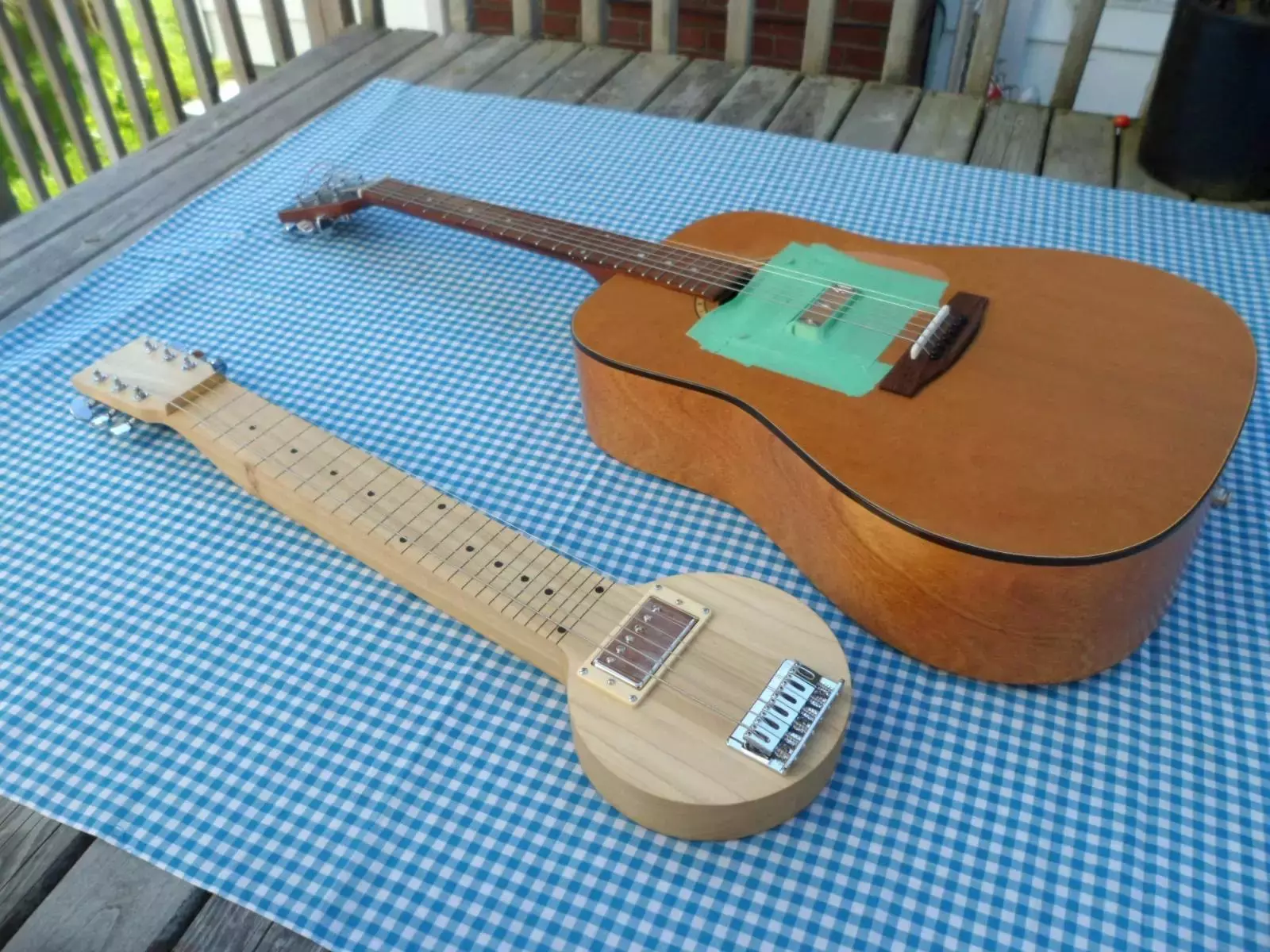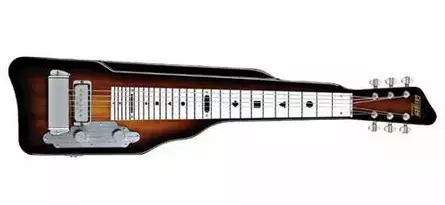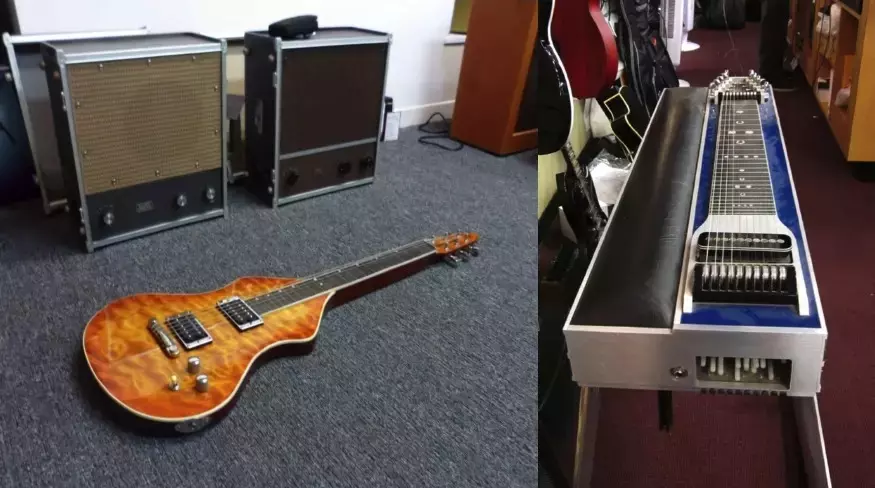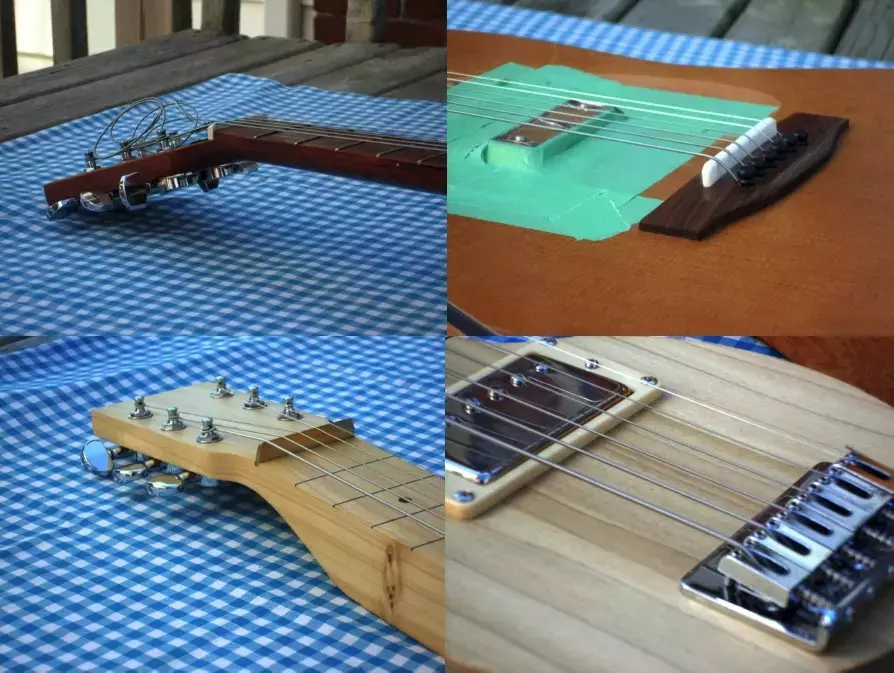Slide Guitars: What types are there and what defines them?
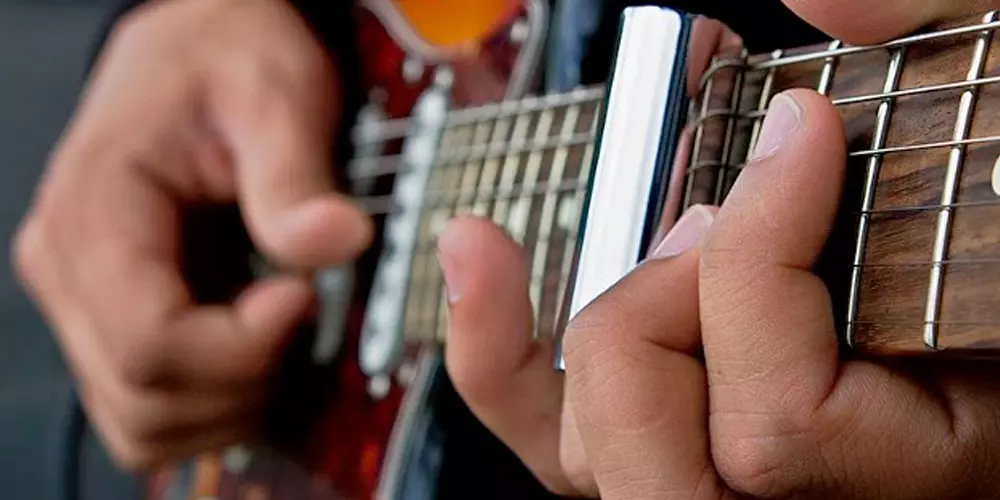
Updated on: July 30, 2024
Slide guitars offer a distinct sound that has captivated musicians and listeners. The slide guitar adds emotion and richness to music, from blues to country, with its soulful sound and twang.
Musicians use slide guitars for various styles and sounds but often use the terms for these instruments without knowing what they mean. We created this guide to help you sort out some of the confusion.
In this blog, we will explore the sliding technique and compare the different types of slide guitars available on the market.
What is a Slide Guitar?
Slide guitar is a technique for playing the guitar that is often used in blues music. It involves playing a guitar with a smooth, rounded object, a slide, fitted on your finger. The slide can be made of glass, metal, ceramic, or other materials. The slide allows the player to glide naturally between notes, creating different tonal effects.
A guitar slide may cover your entire finger or start at the knuckle. The ring finger is the most common finger to use for sliding as it gives the player the most control. Musicians who use their middle finger find it easier to play power chords, notes, and scales. Some musicians, like Muddy Waters, used a slide on his pinky finger for single-note playing.
Guitar slide rings also exist despite being less used. Guitar players can easily switch between slide guitar and regular playing using a ring instead of a long tube. This makes it more convenient to transition between different playing styles. It allows players to incorporate slide guitar techniques into their regular playing.
The Technique of Sliding
Sliding involves pressing a slide against the strings instead of using fingers to press the strings down to the frets. The player moves the slide along the strings to change pitch, producing a fluid, gliding sound. Here are some key aspects to consider when sliding:
-
Slide Material: The material of the slide affects the tone. Glass slides provide a smooth, warm tone, metal slides offer a brighter, more cutting sound, and ceramic slides give a blend of both.
-
String Action: Slide guitarists often prefer a higher string action (the distance between the strings and the fretboard). This prevents the slide from hitting the frets and allows for a cleaner, more resonant sound.
-
Tuning: Open standard tunings (like Open G or Open D) are commonly used for slide guitar tuning, making it easier to play chords and melodies with the slide.
While a slide can be used on various guitars, certain models are specifically designed for slide playing.
Types of Slide Guitars
Multiple types of slide guitars exist within the scope of guitars. Each slide guitar has its own characteristics and suitable styles. Let's take a closer look at them.
A Tremblay Guitars lap steel (left) and a Simon & Patrick converted lap slide (right).
Resonator Guitar
Resonator guitars were first produced in the 1920s and designed with metal cones inside the body. These cones amplify the sound, giving resonator guitars a louder, more metallic tone.
Players hold bottleneck-style slide guitars against their bodies and play them with the slide held upright, similar to a normal guitar. Bottleneck guitar slides are popular in blues and bluegrass music. Resonator guitars are played with a slide or with standard fingerpicking techniques.
Lap Slide Guitar
The lap slide (or lap-steel) guitar is a style of guitar laid flat on the player's lap, with the slide parallel to the floor. It typically features a solid body and a high action, making it ideal for slide playing.
The general term for an acoustic guitar made for lap style is a "lap slide." This includes converted standard acoustic guitars, square-neck flat tops, and Weissenborn guitars, which feature a cascading body contour and hollow design from the body to the neck.
Musicians sometimes play the style with a flat pick or with their fingers. Lap steels are commonly used in Hawaiian music, country, and western swing. The player uses a slide bar instead of a traditional slide to glide over the strings. Most guitars can be adapted to play in the lap slide position.
Square-neck resonator Dobro guitars are technically lap slide guitars, but most players consider playing Dobro a style and instrument unto itself.
A smooth yet sonic blast from the past. The Gretsch Electromatic Lap Steel reproduces the unmistakable rich tones of an electric Hawaiian guitar.
Steel guitars (Lap steel, Pedal steel)
The common term for an electric guitar used to play lap style is "steel guitar." The two main types of steel guitars are lap steel and pedal steel.
A lap steel (sometimes referred to as non-pedal steel) is a short-scale, simple-bodied, square-neck electric guitar with six or more strings. It is designed to sit on the lap or attach to a series of adjustable table legs. These table-style steel guitars are also referred to as console steel guitars. Electric guitar models based on the Weissenborn style also exist, which technically fit the lap steel category.
A Weissenborn-inspired lap steel by ToneHound (left) and a GFI single neck pedal steel. (Photo: courtesy of Asa Brosius and Gig Street, Halifax)
Pedal steel guitars are complex instruments with strings that can be raised in pitch using foot pedals and knee levers. They have ten to fourteen strings on top and are designed with pulleys. The engineering mechanics behind these guitars make them unique and impressive. Multi-neck pedal steel guitar models exist that allow for multiple tunings.
Choosing the Right Slide Guitar
When choosing a slide guitar, it is important to consider these four factors:
-
Genre and Style: Different types of slide guitars suit different musical styles. For someone who plays blues music, a resonator guitar might be ideal. For country, consider a lap steel or pedal steel guitar.
-
Playability: Comfort and ease of play are crucial. Higher action is preferable for slide playing, but it should still be comfortable. Consider whether you play the guitar held upright or laid on your lap.
-
Sound Preference: The slide material and guitar type will affect the sound. Experiment with different combinations to find what you like best.
-
Budget: Slide guitars come in a range of prices. Set a budget and find the best option within your price range.
Considerations When Choosing a Slide Guitar
-
When playing in either style, ensure the string action is high enough for the string to move around without knocking against the frets and fretboard.
-
When playing bottleneck style, press the slide against the strings with as little or as much weight as needed. All you need is a standard setup on a standard guitar, but you can achieve it by raising the bridge or saddle. It doesn't require a specific type of guitar or major readjustments.
-
With lap style, the weight of the slide bar is on top of the strings, which often requires raising the nut at the top of the neck. This can be done temporarily with a Dobro nut. For more permanent options, install a taller nut.
-
The most common slide guitar tuning for slide guitars is open D, open G, and open E tuning.
Setting up: note the taller nuts and saddles required for lap style playing.
Slide guitars offer a unique and expressive way to play music suited to different genres and styles. Whether you're drawn to the sounds of the blues, the bright tones of country, or the mellow vibes of Hawaiian music, there's a slide guitar out there for you.
Playing slide guitar is a unique way to add effects to your playing and spice up your music. By understanding the various types and techniques, you can discover the perfect slide guitar that suits your musical journey. Your local Long & McQuade shop carries a wide variety of slide guitars & slides.

